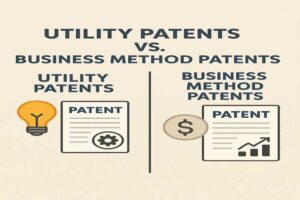The distribution of shares of stock, of bonds or of any other sort of securities can be done in a private or public manner.
Everywhere in the world, any distribution of securities is highly regulated by the legal order. This arises from the very nature of the security that incorporates a right or an obligation on a support, but whose neither quality, nor value, nor problems can be determined by examining it.
Traditionnally, it is a certificate, a document made out of thick secure paper as the certificates of shares of stock show hereabove. But with the evolution of the stock markets and stock exchanges that followed those of information technologies answering to the need to accelerate the speed of transaction, the support has dematerialised to become first a register, and then a database.
However, in the private distribution world, the security is either always a certificate, or a register of shareholders or of bondholders help by the issuing company of the securities in question called issuer.
The issuer, products and services he proposes, the markets it addresses, the securities intended to be sold to the investors to be financed, the risks the issuer incurs and those that the investors will incur by purchasing these securities must be assembled into a disclosure prospectus sometimes called Private Offering Memorandum. and other times Private Placement Memorandum.
It should be clear that that last designation is both more frequent and more ancient. Today the regulator recommends its use in case of securities issued by a public company, that means listed on a stock market but distributed privately.
In the much more rare case where private distribution aims at the resale or at the total or partial liquidation of the participation of a shareholder or of the bonds of a creditor, the distribution is made through a prospectus called Private Distribution Memorandum.
This exceptional case is a situation of distribution on the secondary market, that is whose proceeds of the sale goes to a third-party shareholder or creditor and not to the issuer as on the primary market.
In insider jargon, they are referred to by their acronyms P.O.M., P.P.M. and P.D.M.
The Essential Rules of Private Distribution
- Any securities private (or public) distribution must be done on the base of a prospectus.
- Potential investors solicited must belong to a category called “accredited investors“. It can be simply defined by saying they must either be professional or rich (because it allows them to hire the services of a professional). To have the exact description of it, consult my article called Investors Categories.
- The person who presents the opportunity of investment called
“Promoter” must be a director or an employee of the issuer, or a registered financial intermediary (securities broker, trader, investment banker, commercial banker, financial adviser, fund manager etc…) - The promoter may not use arguments that are not included in the prospectus.
- The promoter is not allowed to sell a financial return or a valuation result by saying “your investment will double within x year(s)”.
- The promoter may not personally or through a third-party guarantee the investment by committing to reimburse or to compensate totally or partially the potential loss the investor might incur.
- The promoter is not allowed to convince the investor by offering him or her promotional gifts or by retroceding all or part of his commission.
- The promoter may not sell in conditions other than those described in the prospectus and mainly not sell at a different price from the one stated in the prospectus.
- The promoter is strictly forbidden to remunerate an investor’s advisor or any person directly or indirectly participating in his decision process.
- The promoter may not amend or complete the prospectus, draft other securities sales documents or use third-parties’ ones.
- The promoter may not warranty the investor an exit deadline.
- The promoter is not allowed to use news from the issuer as a term of investment. i.e.: the issuer having officially announced its initial public offering for a given period, the promoter uses this news release as a “proof” to the investor that he or she will be able to liquidate his or her participation during this period.
- The promoter may not argue about the amount of securities sold to induce the investor to invest, especially by puting pressure because there are only a few securities left.
- The promoter may use the name of some investors of reference but may not neglect the aspect of suitability requirements of an investment for one specific investor.







